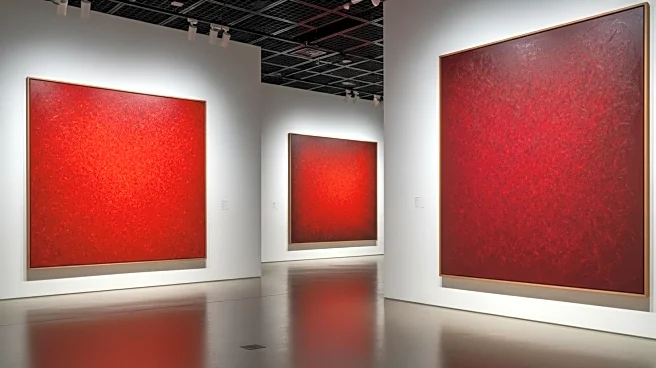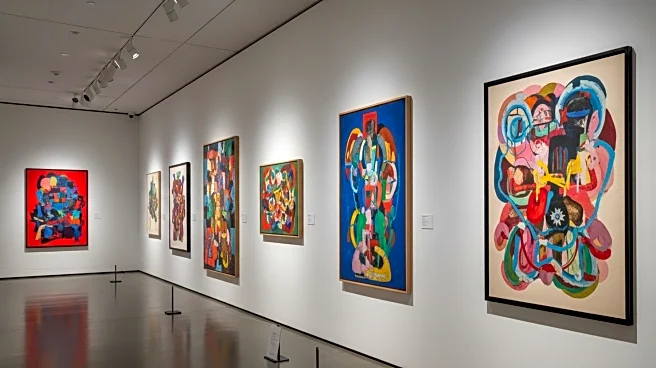What's Happening?
Betty Parsons, a renowned American art dealer and artist, is the subject of a retrospective exhibition at the De La Warr Pavilion in Sussex. Known for her pivotal role in promoting abstract expressionism, Parsons opened a progressive gallery in Manhattan in 1946, showcasing artists like Mark Rothko and Jackson Pollock. Despite pressure from these artists to focus solely on their careers, Parsons chose to maintain a diverse roster, nurturing various talents. The exhibition features her works from the 1930s to 1982, including paintings and driftwood sculptures created in her seaside studio in Southold, Long Island. Her art, influenced by travels to Africa and the Caribbean, is characterized by vivid colors and abstract forms.
Why It's Important?
Betty Parsons played a crucial role in the development of abstract expressionism, a movement that significantly shaped modern art. Her decision to support a wide range of artists, including women, queer artists, and people of color, was groundbreaking in the male-dominated art world of her time. This exhibition not only celebrates her artistic contributions but also highlights her influence as a gallerist who championed diversity and innovation. By showcasing her work, the exhibition underscores the importance of inclusivity and the impact of diverse voices in the art community.
What's Next?
The retrospective may inspire renewed interest in Parsons' work and her contributions to the art world. It could lead to further exhibitions and discussions about her legacy and the artists she supported. Art historians and enthusiasts might explore her influence on contemporary art practices and the ongoing relevance of her approach to diversity in the arts.
Beyond the Headlines
Betty Parsons' story reflects broader themes of perseverance and dedication to one's artistic vision, despite external pressures. Her commitment to diversity and innovation in art serves as a reminder of the importance of supporting underrepresented voices. The exhibition invites viewers to consider the ethical and cultural dimensions of art curation and the lasting impact of inclusive practices.











